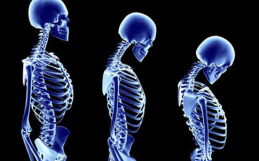I will often see patients with various types of vertigo come into the office. For this reason, I thought I would write a brief review of the most common vertigo I see: BBPV.
What is BPPV?
Benign Paroxysmal Positional Vertigo (BPPV) is one of the most common causes of vertigo, a sensation of spinning or dizziness. This condition occurs when tiny calcium carbonate crystals, known as otoconia, become dislodged from their normal location in the utricle of the inner ear and move into the semicircular canals, where they disrupt the normal balance signals sent to the brain.
Lets make it simple:
BENIGN: not harmful
PAROXYSMAL: sudden increase of signs and symptoms
POSITIONAL: motion of head
VERTIGO: spinning when not spinning
Symptoms of BPPV
Individuals with BPPV often experience:
- Sudden and intense dizziness (vertigo) triggered by changes in head position, such as looking up, rolling over in bed, or tilting the head.
- A spinning sensation that usually lasts for seconds to a few minutes.
- Nausea or, in some cases, vomiting.
- A sense of imbalance or unsteadiness.
- Involuntary eye movements (nystagmus) that accompany the episodes of vertigo.
Causes of BPPV
The exact cause of BPPV is not always clear, but common risk factors include:
- Head trauma or injury, which can dislodge the otoconia.
- Age-related degeneration of the inner ear structures.
- Viral infections affecting the inner ear.
- Prolonged bed rest or inactivity.
How is BPPV Diagnosed?
BPPV is typically diagnosed through a medical history review and a physical examination. The Dix-Hallpike maneuver is a common test performed by healthcare providers to confirm BPPV. This test involves guiding the patient through specific head movements to trigger vertigo and observe characteristic eye movements.
BPPV vs Cervicogenic Vertigo
Benign Paroxysmal Positional Vertigo (BPPV) and cervicogenic vertigo are two distinct conditions that can cause dizziness, but they have different characteristics and underlying mechanisms.
BPPV is a common cause of vertigo, characterized by brief episodes of dizziness that occur with changes in head position relative to gravity. Symptoms typically last for a few seconds to several minutes and are often accompanied by nystagmus, which can be detected through tests like the Dix-Hallpike maneuver.
Cervicogenic vertigo, also known as cervicogenic dizziness, is a condition where dizziness and disequilibrium are associated with changes in cervical spine position. Symptoms can last for several minutes to hours and are often accompanied by neck pain or stiffness. Unlike BPPV, cervicogenic vertigo does not typically cause true spinning vertigo and is more often described as a feeling of light-headedness or unsteadiness.
Cervicogenic dizziness can often be alleviated through chiropractic care, which focuses on restoring proper alignment and function to the cervical spine. It can reduce nerve irritation, and improving overall balance and stability.
Diagnosing cervicogenic vertigo can be challenging as there is no single diagnostic test available. Clinicians often need to rule out other causes of dizziness, such as BPPV, before confirming a diagnosis of cervicogenic vertigo.
- Benign Paroxysmal Positional Vertigo (BPPV): Brief episodes of vertigo triggered by changes in head position, lasting a few seconds to several minutes.
- Cervicogenic Vertigo (Cervicogenic Dizziness): Dizziness and disequilibrium associated with neck movements or certain neck positions, lasting several minutes to hours.
It is important to note that BPPV can sometimes be misdiagnosed as cervical vertigo due to overlapping symptoms and the lack of a definitive test for cervicogenic vertigo.
Treatment Options for BPPV
Most cases of BPPV can be effectively managed with simple, non-invasive repositioning maneuvers designed to move the dislodged crystals out of the semicircular canals. These include:
- Epley Maneuver: A series of head movements performed by a healthcare provider to guide the crystals back to their original position in the utricle. * this is the protocol I perform along with further recommendations*
- Brandt-Daroff Exercises: A set of repeated movements that patients can do at home to help reduce vertigo over time.
- Semont Maneuver: Another repositioning technique used to relocate the displaced crystals.
- Increase Vitamin D3: Research suggests that vitamin D deficiency could be related to BPPV, and that taking vitamin D supplements might help some people reduce their risk of having repeated episodes of BPPV.
Prognosis and Prevention
BPPV is not a life-threatening condition, and with proper treatment, most people experience relief within a few days to weeks. However, recurrence is possible. To reduce the risk of future episodes:
- Avoid sudden head movements that may dislodge the otoconia.
- Perform balance exercises to strengthen stability.
- Sleep with the head slightly elevated if prone to recurrent BPPV.
- Have your Vitamin D3 levels tested and supplement with D3 combined with K2 and safe sun exposure (avoid getting burned) to get your levels to an optimal range. See my Video on Vitaman D3/K2 here.
When to Seek Medical Attention
Although BPPV is usually harmless, it is important to see a healthcare provider if:
- The vertigo episodes are prolonged or accompanied by severe headaches, vision changes, weakness, or difficulty speaking.
- There is persistent dizziness that affects daily activities.
- Symptoms do not improve with treatment.
Conclusion
BPPV is a common and treatable condition that can significantly impact daily life. By understanding its causes, symptoms, and treatment options, individuals affected by BPPV can take appropriate steps to manage their condition and improve their quality of life. If you suspect you have BPPV, consult a healthcare professional for an accurate diagnosis and effective treatment plan.
Feel free to share this article if you have friends or family that are experiencing vertigo and not quite sure what to do.
In health,
Dr Dan.












